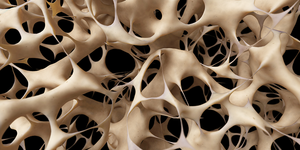Osteoporosis is a modern day epidemic longevity has brought about and represents an enormous socioeconomic burden. Being largely asymptomatic the silent thief can get away with insidiously stealing the patient’s bones until, as a result of the relentless bone loss, fragility fractures inevitably occur. The first, so-called sentinel fracture is the forerunner of the devastating fracture cascade as any prior fracture translates into a two- to four-fold increase in the risk of sustaining a subsequent one within one year [1].
In 2003, the approval of teriparatide, the first bone anabolic agent, opened new frontiers in the fight against osteoporosis. However, its hefty price tag excluded many that could have benefited from it. Sixteen years later, after the imminent expiry of the Forsteo patents, the biosimilar era in osteology will begin.
The first biosimilar teriparatide (RGB 10) manufactured by Gedeon Richter was granted marketing authorization in January 2017 by the European Medicines Agency (EMA) [2]. This not only represents the first biosimilar in the therapeutic armamentarium of anti-osteoporotic drugs, but also the pioneer of the so-called specifically tailored development approach recently adopted by EMA [3, 4]. This means that the amount of clinical data required to establish therapeutic equivalence is aligned with the complexity of the molecule and the extent to which comparable profiles of the originator and the biosimilar could be demonstrated on the quality and non-clinical levels of the comparability exercise.
Owing to its structural simplicity, attributable to its low molecular weight and the bacterial fermentation used to produce it, coupled with the possibility of full characterization on the analytical level teriparatide represented the ideal candidate for maximizing the potential residing in the tailored approach. The robust data derived from the exhaustive quality and non-clinical comparability exercise constituted the sound basis for the specifically-tailored clinical development comprising a single comparative pharmacokinetic/pharmacodynamic (PK/PD) study conducted in 54 healthy female volunteers [5].
The objectives of this methodologically-sound, randomized, active-controlled, double-blind, two-way crossover study of RGB 10 and its reference product Forsteo were to establish equivalent PK as well as comparable PD and safety profiles of the two compounds. The 94.12% confidence intervals (CIs) for the geometric mean ratios (test/reference) of the co-primary PK endpoints of area under the curve (AUC)0-tlast (85.20%‒98.60%) and Cmax (85.51%‒99.52%) fell entirely within the standard bioequivalence range of 80%‒125%. No statistically significant differences in the secondary PK endpoints of tmax and t1/2 were detected. Statistical analysis of the serum calcium PD parameters yielded geometric mean ratio (GMR) values of 99.93% and 99.87% for AUC and Cmax, respectively, and a median difference of 0.001 for tmax. According to the authors, the PK and PD profiles of the two compounds indicate that equivalent exposure results in an equivalent calcaemic response further supporting the biosimilarity claim, and the two compounds proved to be highly similar in term of safety with no notable differences in either the type or the frequency of the adverse events reported.
Conflict of interest
The authors of the research paper [1] reported conflicts of interest, including having worked as a consultant and advisory board member, having received payment for lectures and being an employee of Gedeon Richter. For full details of the authors’ conflict of interest, see the research paper [1].
Abstracted by Enikő Jókai, Gedeon Richter, Budapest, Hungary.
Related article
Biosimilars of teriparatide
References
1. Johnell O, Kanis JA, Odén A, et al. Fracture risk following an osteoporotic fracture. Osteoporos Int. 2004;15(3):175-9.
2. GaBI Online - Generics and Biosimilars Initiative. EMA approves biosimilars of insulin glargine and teriparatide [www.gabionline.net]. Mol, Belgium: Pro Pharma Communications International; [cited 2019 Feb 22]. Available from: www.gabionline.net/Biosimilars/News/EMA-approves-biosimilars-of-insulin-glargine-and-teriparatide
3. European Medicines Agency. Guideline on similar biological medicinal products. CHMP/437/04 Rev 1. 23 October 2014 [homepage on the Internet]. [cited 2019 Feb 22]. Available from: https://www.ema.europa.eu/documents/scientific-guideline/guideline-similar-biological-medicinal-products-rev1_en.pdf
4. Medicines for Europe. Biosimilar medicines handbook. 2016; 3rd edition.
5. Takács I, Jókai E, Kováts DE, et al. The first biosimilar approved for the treatment of osteoporosis. Osteoporos Int. 2018 Oct 24. doi:10.1007/s00198-018-4741-0 [Epub ahead of print]
Permission granted to reproduce for personal and non-commercial use only. All other reproduction, copy or reprinting of all or part of any ‘Content’ found on this website is strictly prohibited without the prior consent of the publisher. Contact the publisher to obtain permission before redistributing.
Copyright – Unless otherwise stated all contents of this website are © 2019 Pro Pharma Communications International. All Rights Reserved.








 0
0











Post your comment